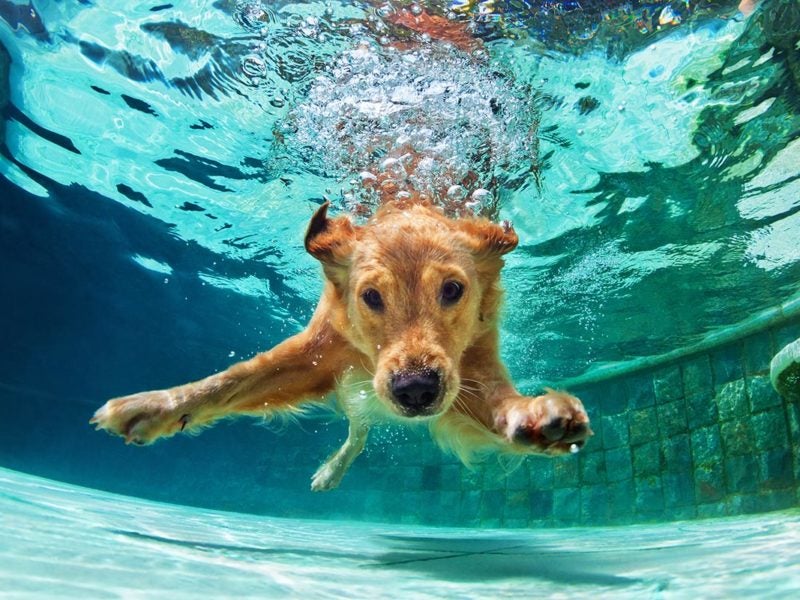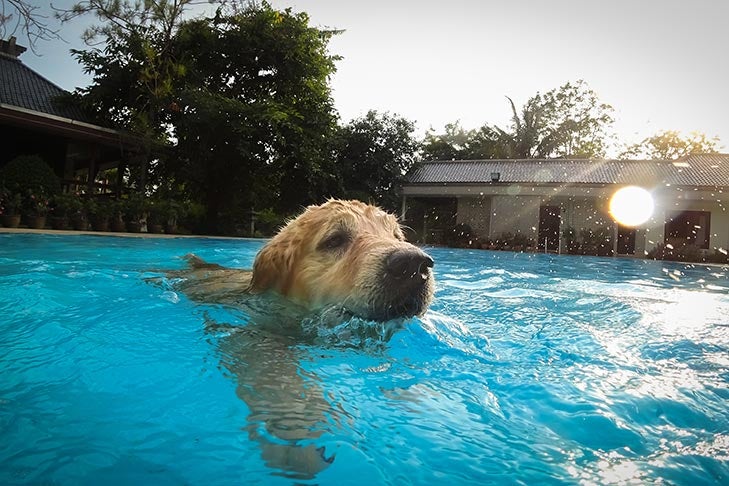
AKC is a participant in affiliate advertising programs designed to provide a means for sites to earn advertising fees by advertising and linking to akc.org. If you purchase a product through this article, we may receive a portion of the sale.
If you own a dog, chances are you’ve enjoyed watching your furry companion launch themself into a pool in summer. While this is pleasing to watch for many humans, it does raise a question — is chlorine safe for dogs?
When humans swim in a pool, most chlorine levels are safe, even if you happen to ingest water by accident. Most canines, on the other hand, have ears and eyes that are more sensitive than their owner’s ears and eyes. This sensitivity makes dogs more susceptible to the dangers of chlorine. However, dogs with floppy ears can retrieve an ear infection because of the dampness, not the chlorine.
Making Chlorine Safer for Dogs
“As far as chlorine, the amount in a pool is negligible, but the toxic concerns are with dogs getting into chlorine tablets, so they should be put in a safe location where a dog cannot ingest them,” Dr. Jerry Klein, Chief Veterinary Officer for the American Kennel Club, notes. Some canine owners choose to apply non-chlorine chemicals like Bromine (which is safer for pets) to their pools.

If your pet does hop in the pool, give them a quick rinse when they get out to remove any excess chemicals. In addition, be sure to dab their ears with a towel to prevent dampness and infection.
When most dogs see a pool, they may see a huge water bowl. Make sure to prohibit licking or drinking the pool water, as this could cause other issues. It will be best to have fresh water close by.
Dog Swimming Safety
Overall, if your furry friend is properly cared for after and while swimming, chlorine is safe. The biggest misconception is how your dog actually approaches swimming. “Not all dogs want to swim and those that don’t can be encouraged, but should not be forced,” Dr. Klein adds.
Owners should allow their dogs to enter the pool at their own leisure and be praised every step along the way. Dogs should never be thrown into the pool, as many dogs are fearful the first time they approach the water. To help your canine enter the water, try tossing a toy or escorting them yourself. The easiest part? You won’t have to teach most dogs how to swim because they are natural swimmers.

Is it your dog’s first time swimming? Most dogs tend to panic when they try to exit a pool for the first time. They aren’t used to walking up the ladder and as an owner, you have to show them how to use the steps. When a dog starts to thrash in the water, they can’t bark and will get tired. That could possibly lead to drowning. Because of this, it’s also best to surround your pool with a fence to prevent accidents. Never leave the dog in the pool without supervision, and teach them how to exit the pool using a toy or treats.

